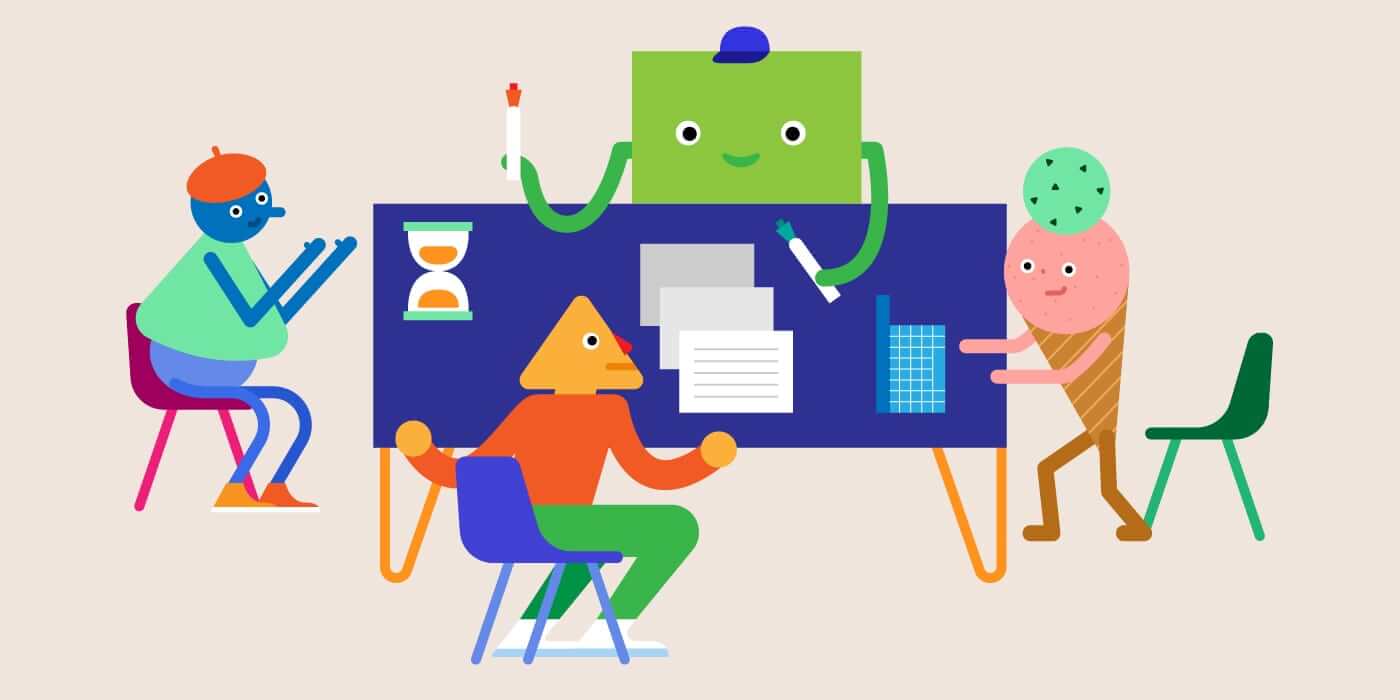Let’s be real. We’ve all lost hours of our lives to pointless meetings. You know the ones we’re talking about, where one person drones on while another mindlessly checks email and nobody brings any ideas to the brainstorm. We’ve all been there (and we’ve all been guilty of this behavior), but we know meetings like these aren’t helpful to anyone.
Still, meetings are necessary, so you can’t ditch them entirely. Lately, as part of an overall push to improve our productivity, protect our time, and spend our energy wisely, we’ve been looking for ways to make our meetings better. How can we make them more effective and less intrusive? How can we use our time economically? How can we ensure everyone stays focused?
To remedy some of our more persistent meeting-related frustrations, we decided to come up with some new rules about meetings. And because we know this is a problem that everyone faces (no matter the industry), we thought we’d share some of those helpful tips today.
9 Tips to Improve Your Meetings
Every organization is unique, but there are a few general tips that can improve any meeting. When you need to channel your focus or do some deep collective thinking, try these techniques.
- Have an agenda. Make the purpose of the meeting clear up front, and outline an agenda ahead of time. This ensures you stay on task and cover everything you need to. You should also distribute any necessary materials before the meeting, or let people know what they’re expected to contribute to the meeting (e.g., ideas, pitches, feedback, etc.).
- Identify a wrangler. You need to keep everyone on the same page, but in a fun brainstorm or large meeting, it’s easy to get sidetracked. Identify a meeting leader who can guide the conversation and keep people focused on your meeting’s objectives. (Our wrangler is usually the person who called the meeting.)
- Be on time. Duh.
- Be prepared. We believe in being good to each other, respecting each other’s time, and doing good work. Being prepared for a meeting is a huge part of that. If you didn’t have time to read the creative brief, brainstorm ideas, or crunch the numbers before the meeting, you’re wasting everyone’s time while they wait for you to catch up.
- Be engaged. If you’re attending a meeting, you must be either 1) learning or teaching, or 2) contributing. If you aren’t doing either, then there’s no need for you to be there.
- Time block efficiently. Traditionally we’d schedule half-hour or hour-long meetings, but this was a problem for those of us who had back-to-back meetings all day long. If one went long, it caused a domino effect, not to mention the fact that we could barely fit in a lunch. To remedy this, we try to schedule a 10-minute break between meetings (e.g., 12-12:50 pm vs. 12-1 pm). This helps ensure we stick to our time and give ourselves have a brain break between meetings. Thus far this simple change has been tremendously helpful.
- Ban devices. This one seems obvious, but we often find ourselves distracted by Slack, email, or the inevitable stream of small fires—all sneaking in through our laptops and phones. So we’ve decided to ditch our devices. Now we agree to only use devices in a meeting if we need to take notes or do research for that meeting. (Even then, it’s usually the wrangler who’s on a laptop.) This keeps us focused and engaged throughout the meeting, letting us get more done in less time.
- Avoid distracting elements. We all work differently, and certain things are more irritating to some people than others. Things like crinkly chip bags or a messy salad may seem innocent, but they can easily distract from the task at hand, so we’ve asked people to bring only what they need to a meeting. (Basically, if you have to look down to deal with it, leave it.) Also, we make sure to let people know of any anticipated interruptions or distractions (e.g., a client call) up top.
- Leave with action items. Meetings are meant to help you get things done, so you should always leave with clear next steps and assigned action items. This helps everyone understand their responsibilities and expectations.
Collectively, these rules do a lot to help us ensure that we use our time wisely and efficiently. Not every tip may apply to your organization, but we hope you find some of them helpful helpful. FYI, if you do plan to tweak your meeting rules, we suggest posting them so everyone can see them. (It’s an easy way to increase accountability and decrease micromanaging during meetings.)
Remember: Meetings Aren’t the Only Way to Work More Efficiently
When it comes to working efficiently, we think it’s worthwhile to experiment and remain open-minded about the way you do things. Luckily, this approach has paid off for us. Over the years, we’ve picked up plenty of tips, tricks, and tools to help us do creative work over the years, all of which we’re happy to share with you.
So if you’re looking for more ways to work effectively…
- Try our tips for better brainstorms.
- Use these 10 techniques to get unstuck when you hit a creative block.
- Bookmark these 100+ tools to create better content marketing.
- Try these prompts to find fresh stories for your creative content.
And if you’re curious about working with us, we’d love to chat with you.




